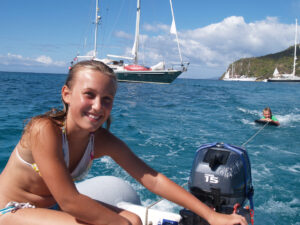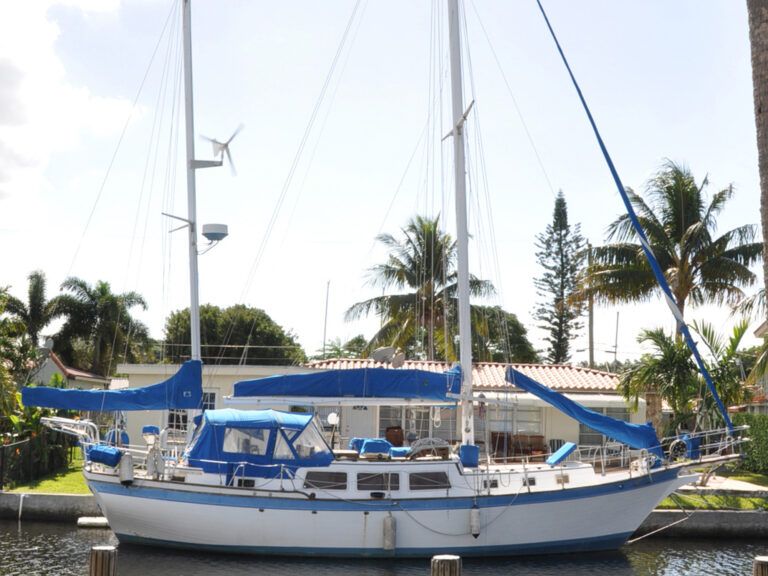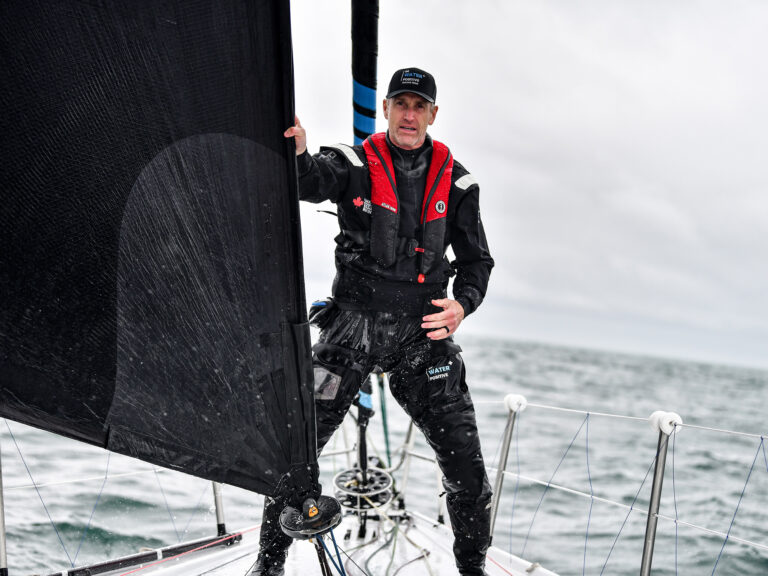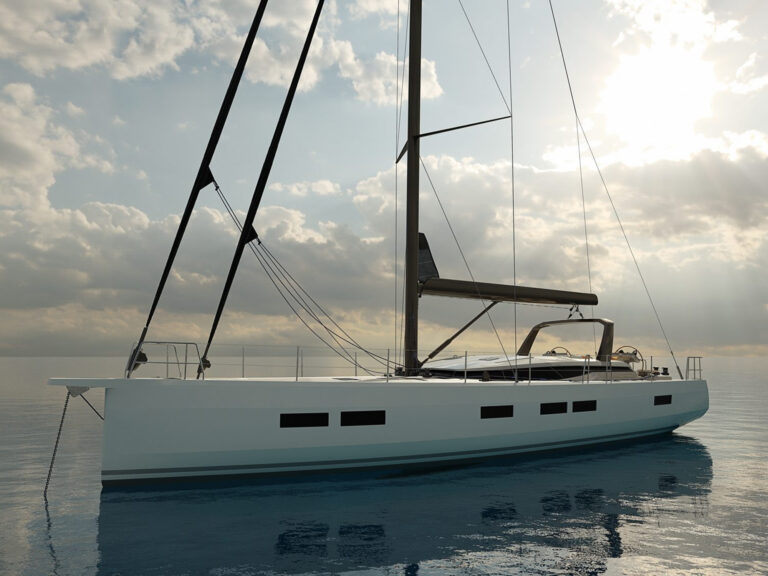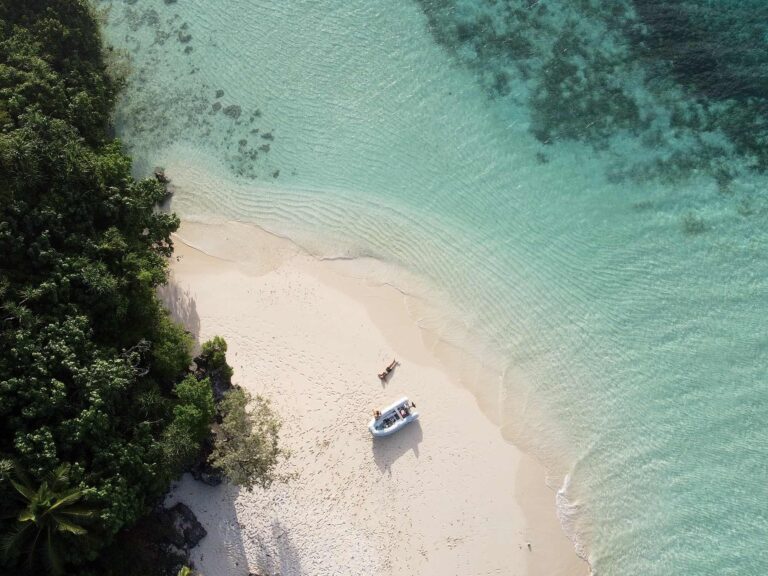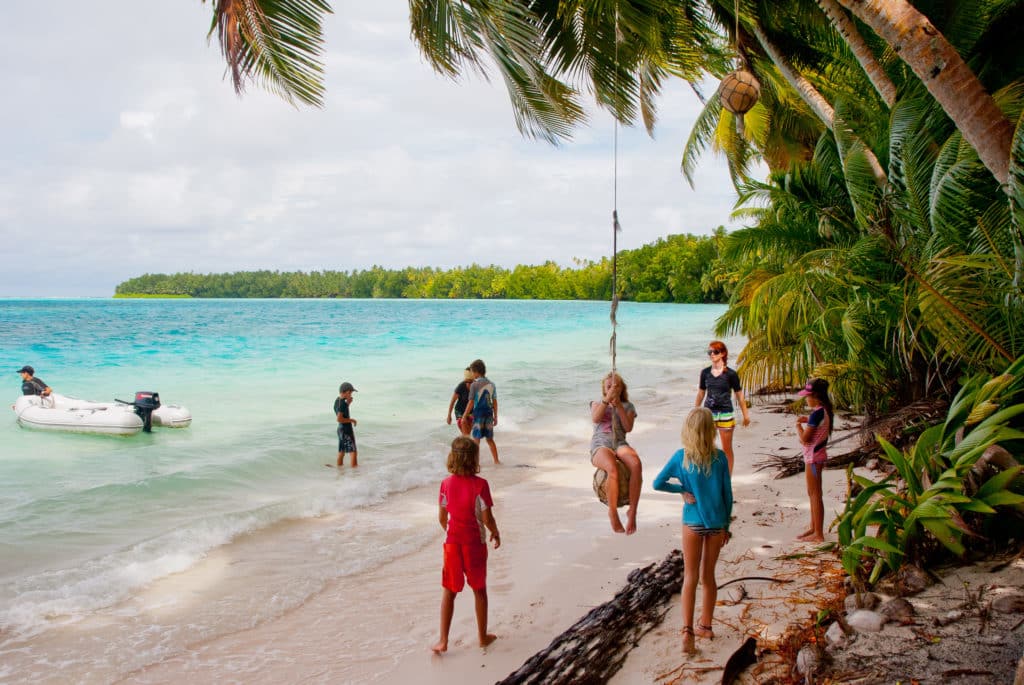
Île Boddam in Salomon Atoll, part of the Chagos Archipelago, is deserted-tropical-island gorgeous. But alongside the clear blue water and sandy beaches, the abandoned graveyard and village buildings add a melancholy air to the place. It’s clear something is missing. And a few days into our recent stay, when a British cruising sailboat grounded on a lagoon reef and needed the assistance of the entire anchorage to work free, the fragility of the isolated atoll was made even more apparent.
The Chagos Archipelago, also known as the British Indian Ocean Territory, is a huge region that encompasses 210,426 square miles, seven atolls and more than 1,000 islands. The islands were settled in the 18th century when the Dutch and French brought slaves there to tend coconut plantations. Slavery was eventually abolished, but the islanders stayed on, building settlements on Diego Garcia, Île Boddam and Île du Coin, and working on the plantations or fishing.
All this changed at the peak of the Cold War, when the United States built a military base at Diego Garcia. One U.S. requirement was that the islands of the entire archipelago be handed over uninhabited. Britain claimed the 1,500 to 2,000 inhabitants of Chagos were transient “contract laborers,” and from 1968 to 1973, the Chagossians were shipped to either Mauritius or the Seychelles — where they’ve been fighting for their right to return ever since.
Uninhabited, Chagos became a fabled Indian Ocean stop for cruising sailors. Prior to the islands becoming a marine reserve in 2010, cruisers would stay for months on end, even growing gardens and setting up encampments on land. These days, after filling out some paperwork, proving wreck removal and medical evacuation insurance, and paying a weekly fee, cruisers can stay up to 28 days.
The arrangement, which has been fantastic for sailors, always struck members of the exiled Chagossian community as extremely unfair. It wasn’t until 2006 that Chagossians could even visit their homeland — and then it was permitted only on BIOT-escorted trips with three-hour-long visits ashore to tend family gravesites.
All this may change again. A BIOT re-population feasibility study indicated there is no reason that Chagossians can’t be returned to the islands. And by the end of this year, a pilot program could be in place that may see some Chagossians heading home.
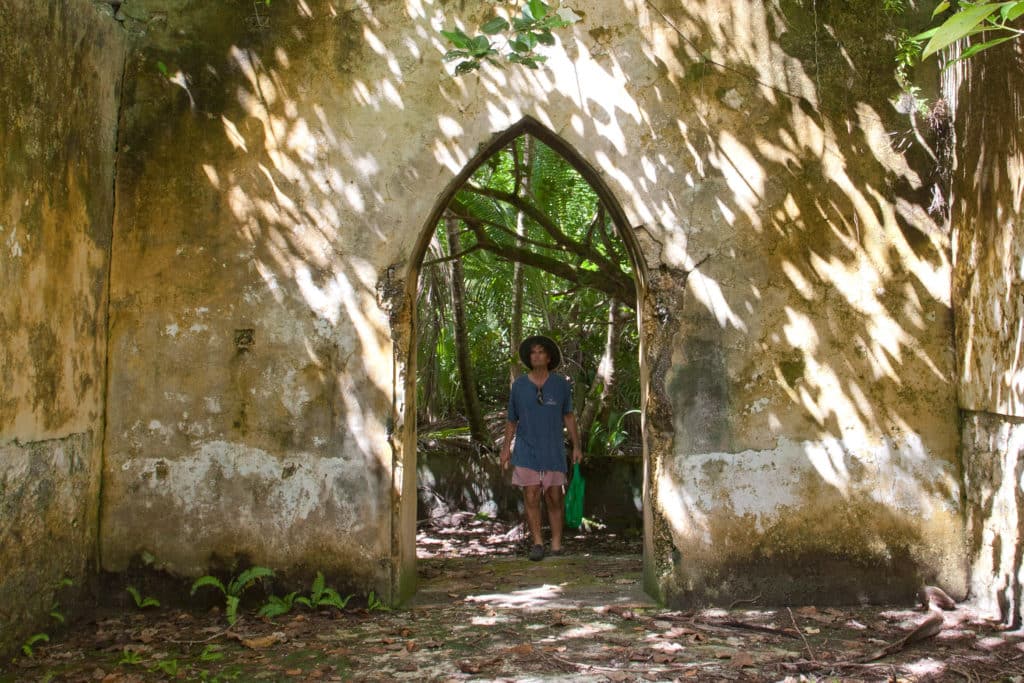
What this means for cruisers isn’t clear yet. The plan has several different options, but it could eventually allow as many as 1,500 Chagossians to return to live in the archipelago. In several islands of the Salomon and Peros Banhos atolls (the two atolls cruisers are permitted to visit), the BIOT paper suggests, “a limited tourist industry could be implemented on a trial basis. … This would be likely to involve supporting and guiding an increased level of yacht visits rather than permanent new infrastructure such as hotels.”
The paper goes on to describe how Chagossians could work to restore some of the historically important buildings, create a small seasonal museum on Île Boddam, provide education, and engage in environmental protection.
Other ideas include installing and maintaining mooring buoys in the coral-rich lagoons of Salomon and Peros Banhos atolls (which would hopefully keep boats off the reef), and providing ranger services similar to those offered in Suwarrow, in the Cook Islands. While some cruisers may lament the loss of a private paradise, Chagossians have said that they hope cruisers will support their effort to get home and will welcome them back.
If You Go
In late January 2016, a summary of BIOT public consultation responses showed support for Chagossians returning to their homeland. From the summary: “All non-Chagossian responses from individuals came from yachters who had some experience of passing through BIOT’s outer islands for the purposes of safe passage (tourism is not permitted). Overwhelmingly, they said they supported resettlement but also the idea of some form of Chagossian engagement in limited tourism of the outer islands and restoration of historic structures on these islands.” For continued updates, visit the Chagos Support Association online (chagossupport.org.uk).
Until the study is formally acted on, cruisers to the area will need to continue to apply for a permit and immigration clearance in advance from biotadmin@fco.gov.uk, and pay the weekly fee of 50 pounds (about $70 USD) for a maximum stay of 28 days. — Diane Selkirk




